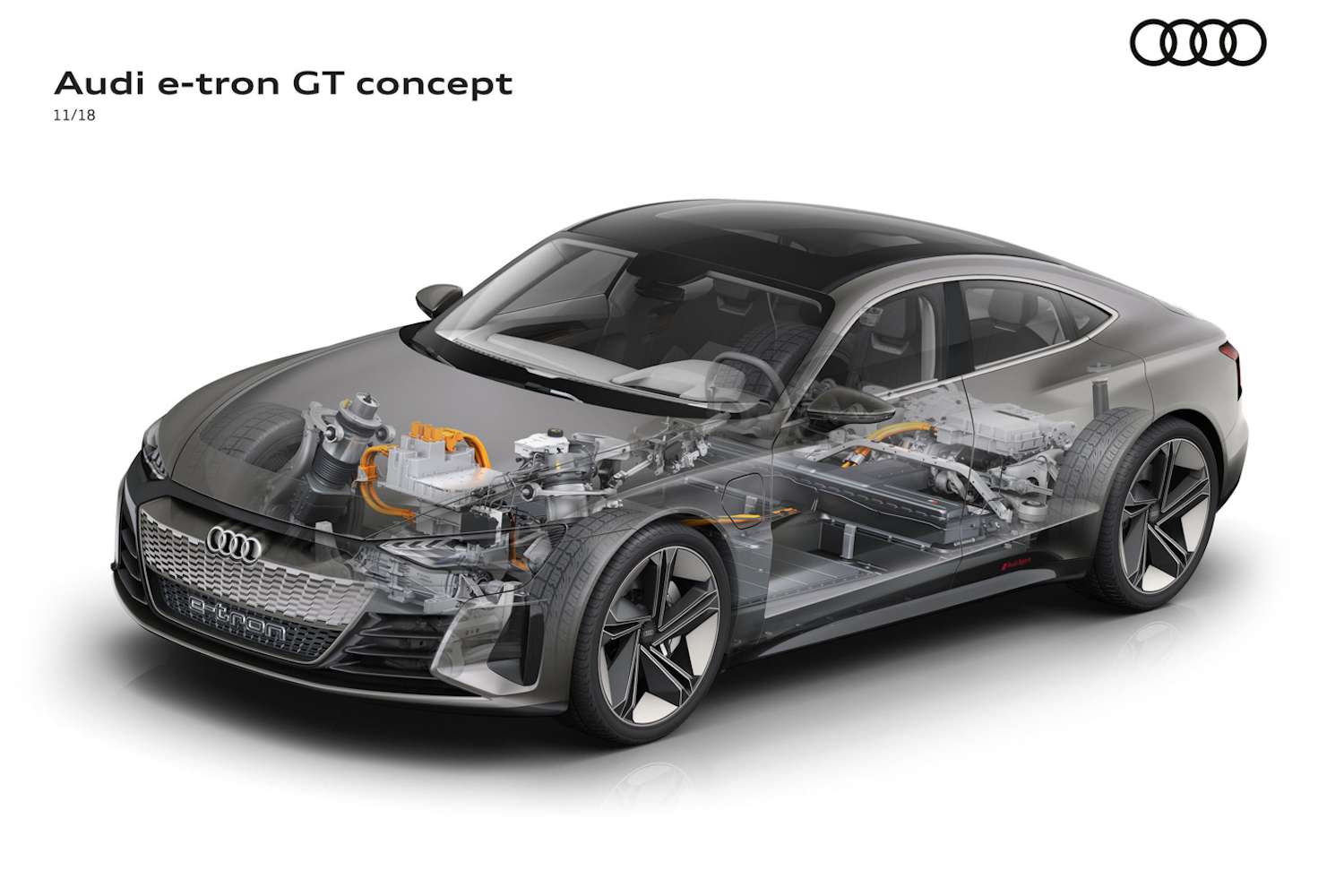Audi has taken the lull in car production and showroom sales numbers, brought about by the ongoing coronavirus pandemic and crisis, to outline its future of electric cars - explaining just how it is going to achieve its target of having 30 electrified vehicles, 20 of which will be full electric vehicles (EVs), on sale by 2025.
e-tron's future
Audi's one of the companies that has responded quicker to the call for electrification of personal transport, as it already has a strong back- and current catalogue of plug-in hybrid electric vehicles (PHEVs) and even a full EV in its arsenal. Indeed, the only slight confusion is that Audi began using the 'e-tron' badging for its PHEVs, as with the 2014-launched A3 e-tron or the Q7 e-tron of 2015, but that name is now going to be appropriated by its full EVs - with the e-tron 55 quattro already on sale and spearheading the German firm's EV offensive.
PHEVs will instead be denoted by the use of a lower-case 'e' after a given model's propulsion type, with all the current models being based on TFSI petrols - so there's an electrified version of the A6 55 TFSI, which is the A6 55 TFSI e, while there are also TFSI e versions of the Q5, A7 Sportback and A8 available. Coming next will be the Q4 and the e-tron GT performance saloon.
MLB evo
Although the Modular Electric Platform (MEB) is finding favour throughout the Volkswagen Group, Audi will base its EVs and PHEVs on more than one single electric-supporting chassis. The first will be MLB evo, which already underpins the e-tron SUV and will be the basis for its forthcoming e-tron S performance derivatives. In the e-tron, which is built in a carbon-neutral plant in Brussels that has a roof-mounted solar array powerful enough to charge 30,000 e-tron SUVs, there is a 95kWh lithium-ion battery and the vehicle can recuperate up to 30 per cent of the energy required to propel itself during regenerative braking applications; a brake-pedal simulator makes the switch between regen and hydraulic stopping power feel almost seamless.
Furthermore, the e-tron can charge using alternating current (AC) or direct current (DC) and will suck in 80 per cent of its battery pack's maximum capacity in just 30 minutes on a 150kW high-speed public charger. Later this year, all things being equal after the corona pandemic, the e-tron will be joined by a coupe-like Sportback model.
Performance electric platform
The J1 architecture will be used underneath the e-tron GT, a concept car fitted with two permanently excited synchronous motors (PSMs) delivering 590hp and 830Nm in total. Audi is targeting serious performance from the e-tron GT, with 0-100km/h proposed in 3.5 seconds and 0-200km/h taking slightly more than 12 seconds in production form. Like Porsche's Taycan, the e-tron GT runs on an 800-volt electrical system. That means it has impressive energy management and cooling systems, and will be able to take in 80 per cent of its battery's charge in 20 minutes on a DC 350kW fast-charger.
Audi wants the e-tron GT to be engaging to drive and so the battery pack is located low down in the platform, between the axles, meaning a low centre-of-gravity and a spacious cabin, while the body and roof of the car are made of carbon-fibre-reinforced polymer (CFRP) to further keep the weight down. The GT's two electric motors will be located on an axle apiece, allowing for the best distribution of torque for sports driving.
MEB most affordable
While MEB isn't the be-all and end-all to Audi's electric ambitions, it of course plays a part. Where Audi's smaller combustion-engined cars, such as the A3 and the Q3, all sit on MQB, and the larger models, from the A4 upwards, all sit on MLB, the idea is that economies of scale (or component-sharing) among these models makes them economically viable.
The same will be true of MEB, which will sit under Audi's small and medium EVs, while the final chassis (which we'll come to shortly) will underpin the medium and large EVs. The Q4 e-tron will therefore sit on MEB and the design of this platform is such that the cars have much smaller front ends/overhangs, which in turn means the front axle and bulkhead can move further forward, freeing up interior space. The Q4 will be about the size of a Q3, but will have a much roomier cabin as a result of its electric drivetrain.
PPE: premium EVs
PPE stands for Premium Platform Electric and that's why it will be the support mechanism for the medium and large EVs from Audi, which aren't focused on driving pleasure first and foremost (and which would therefore otherwise sit on J1). PPE has been co-developed with Porsche from the start and is a high-tech, highly scalable architecture that allows for both 'low- and high-floor' - which means it can sit under regular saloon and hatchback cars, just as easily as it can be used to build electric SUVs, crossovers, Sportbacks and Avants. This one will allow Audi to sell a wide range of combinations of EVs, PHEVs and internal combustion engine-powered models, and - like the e-tron GT concept - the PPE has an 800-volt architecture, allowing for ultra-high-speed charging of up to 350kW.
Massive €12bn investment
Audi has dedicated around €12 billion of global investment through to 2024 to help develop a wide range of EVs, providing the supporting infrastructure develops rapidly. Audi predicts that it will reach a production level of approximately 800,000 electrified vehicles per annum by 2025, as part of parent Volkswagen Group's commitment to the goals of the Paris Climate Agreement - mainly, that it will become a CO2-neutral carmaker worldwide by 2050.












